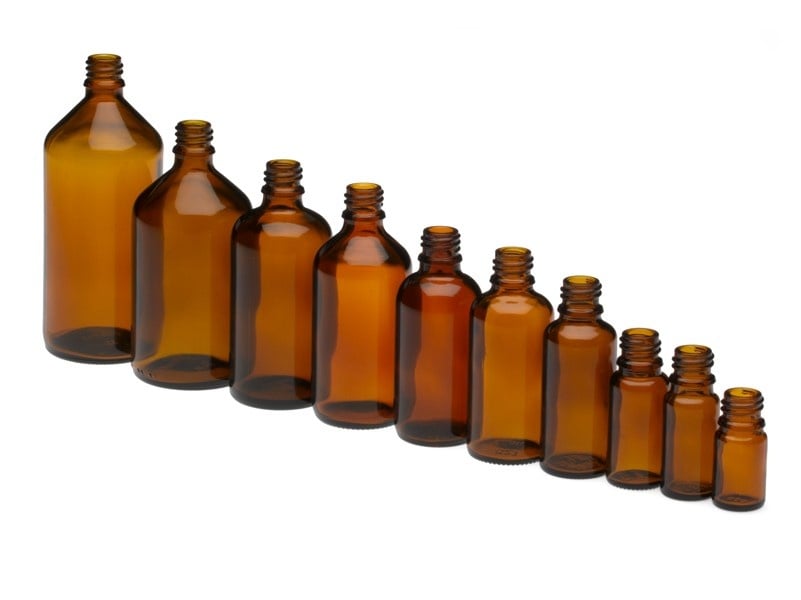
.jpg?width=599&name=Carow7_11_13%202781%20Amber2%20(2).jpg)
As a champion of your company's packaging needs, you always have to be in-the-know on the industry trends and changes that could cause you a real shake-up.
Game-changers can happen rapidly––especially when it comes to the technology and demand behind your consumer product.
That's why today, we're diving into 6 of the biggest trends happening in essential oil bottles and packaging this year. How will you embrace these changes to benefit your brand?

From a consumer perspective, this completely makes sense. Why pay more for a smaller quantity, if you know you can save money on a "family size" version or if you buy in bulk?
This shift means you, as the producer, might be changing your focus from the traditional ½-ounce size to 1-ounce, 2-ounce, and 4-ounce (120 mL) products. Lavender, cedar, peppermint, tea tree oil, and eucalyptus are all fast-moving and demand bigger sizes.
You need your packaging to reflect demand for more ounces with each purchase. This is why we've recently begun offering the 120 mL glass bottle (pictured here) to meet your needs. If you're interested in adopting this option, contact us here.
When it comes to sourcing, you may have chosen an initial supplier years ago––and felt hesitant to shop around again or graduate to a higher quality relationship. In past decades, sourcing was mainly about one thing: price.
Today, you're likely comfortable with the idea of combined products from Chinese, German, and American suppliers.
There are pros and cons to each of your options, and your best solution will depend on your budget and flexibility.
However, we're also seeing the sourcing conversation steer away from just price and start to talk about some other key factors:
If you wanted to relieve your child's stuffy nose with the help of peppermint, you no longer have to research a top-notch health food store or aromatherapy retailer.

In the last year, we've seen an explosion in the retail essential oil segment––where store brands such as Walgreens, TJ Maxx, and grocery chains hire out the development and production of their own essential oil lines.
This trend will increase your competition with more store brands entering the market.
4. Specific market verticals to differentiate products:
In the vein of #4, this is leading many oil producers to develop specific verticals in which to stand out. For instance, oils for freshening shoes, oils for babies, and food-safe products their customers can ingest orally or use with home remedies.
In an increasingly saturated market, it's good to be the "other."
 Experienced fillers are noticing the growth in essential oils as well, and if you have been curious about the business case you could make for hiring out the filling and capping arm of your business, you couldn't be researching it at a better time.
Experienced fillers are noticing the growth in essential oils as well, and if you have been curious about the business case you could make for hiring out the filling and capping arm of your business, you couldn't be researching it at a better time.This is especially true if you have been struggling with technical difficulties or leaky products. Hiring experts in the fill-and-cap stage of your production is becoming even more common, and may not be as expensive as you might have thought.
6. Dropper bottles are everywhere:
The essential oil market is growing rapidly at an estimated 7% annual growth rate! In the past, many customers might have used Boston round bottles to contain these oil products.
Now, in order to compete, they must use dropper bottles with a consistent, easy-dispensing type of cap and dropper, such as the EuroDrop®. This product will continue to grow in popularity alongside the demand of household aromatherapy.
How many of these have you already heard of or began adapting to? Are there other trends you're perhaps wary of, or interested to see how other buyers are adjusting to certain shifts?
We would love to hear your stories in the comments below. And, as always, don't hesitate to contact us if you have packaging projects in the works you'd like to ensure are up to your best standards.

Since 1993, Steve has developed a comprehensive knowledge of dispensing, including sales, operations, information technology, and product development, which he applies when identifying customer solutions. He is the President of Carow Packaging and our representative for Midwestern US & Central Canada Sales.

Get all the latest news and updates straight to your inbox